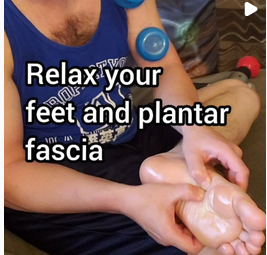Plantar Fasciitis Approach and Treatment
- Tayler Kurtzman

- Feb 6, 2022
- 3 min read
Updated: Aug 22, 2022
Plantar Fasciitis is a issue that affects many people in today's society. The plantar fascia itself is meant to withstand loads of pressure daily. This pressure is absorbed by contracting and relaxing the plantar fascia to displace the force. When the fascia begins to weaken, tear, or is pulled tight it cannot displace the force creating this pain. This can cause irritation and inflammation at the insertion just in front of the heel. Finding a health care practitioner certified in figuring out the root of the problem is key.
Fun Facts about Plantar Fasciitis:
This pathology affects over 10% of patients at some point during their life.
The average age for people to develop this issue is between 40-60 years old due to the loss of elasticity in the tissue as we age.
Plantar Fasciitis is often misdiagnosed as or in place of: Ligament tears, plantar fibromas, and Tarsal Tunnel Syndrome.
Plantar fasciitis often heals without medical intervention if the patient does a great job icing, stretching, and using arches in footwear as needed.
Affects approximately 2 million patients each year.
Heels spurs develop in 50% of the cases.
P-DTR & Functional Neurology Treatment of Plantar Fasciitis
The main goal of P-DTR and Functional neurology work is to determine the root cause of why the muscles aren't working properly and the plantar fascia has to pick up the slack causing excess strain and absorbed force. Often the calf muscles can be weak or underactive so we need to determine what is inhibiting them. These causes could be do to all kinds of things like: stretch receptors, adrenals, organs, meridians, hip or knee mechanics and much more. By bringing proper strength to these muscles we can displace the force and assure proper mechanics of the hip, knee, and lower extremities.
Massage Therapy to treat Plantar Fasciitis
The main goal with massage therapy is to make sure that we are relaxing the calf muscles and bringing blood flow to the area that needs healing. Working on the calf muscles like Gastrocnemius, Soleus, and Tibialis Posterior. This would assume that the calves are naturally tight with no neurological components. Releasing these would allow more room for stretching of the plantar fascia. Using massage or cupping on the plantar fascia itself would be a great way to bring in blood flow and work on those deep plantar muscles that flex the feet.
Homework:
One great thing you can do at home that would cover the bases of both the functional neurology and massage therapy is to release and lengthen the calf muscles but also strengthen them.
Releasing the Calf Muscles
Using a foam roller will allow you to release the calves without having to over stretch the plantar fascia which could be painful. Simply, sitting on your glutes and resting your calf muscle is often enough to get a good release. If you need more pressure you can overlay the other leg on top of the foot resting on the foam roller thus adding more weight.
Stretching:
Stretching is another great alternative that can be done anywhere. One great way to do this would be to find some stairs or raised platform and simply set the ball of your feet near the toes on the ledge and allow your heel to drop.
Check out my stretching blog to learn which kind is right for you.
Strengthening:
There are a variety of ways to strengthen the calves. Depending on what you have access to is what you may choose to use.
Calf Raises:
Calf raises: This is the classic way to build strength in calf muscles and can be done with body weight or added weight. This is simply performed by raising your body up onto the balls of your feet which plantar flex the ankle (point ankle and toes downwards). One way to make this more effective is to use the same stairs or platform; thus increasing the range of which you can rise by starting the heel below horizontal. Adding extra weight like a vest or dumbbell can increase the intensity.
Other activities or sports:
Activities such as Hiking, Running, inclined walking and jumping area all great ways to build strength in the calf muscles.















Comments